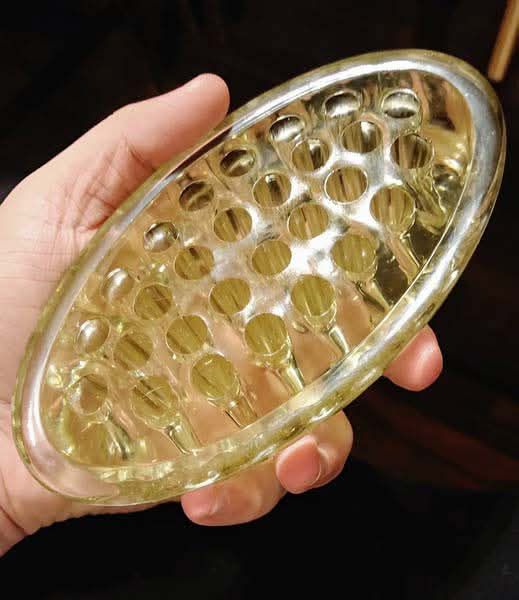ADVERTISEMENT
I Found This at My Grandmother’s: What Is It?
The discovery of a mysterious item at a grandparent’s house is often a nostalgic journey into the past, filled with curiosity and wonder. Whether it’s a peculiar kitchen gadget, a worn-out family heirloom, or a long-forgotten recipe, these treasures often carry a sense of history and significance. Have you ever found something at your grandmother’s house and thought, “What is this?” You’re not alone! Grandparents often have a variety of old, yet fascinating items tucked away in their homes—each with its own story.
In this article, we’ll explore some common but intriguing items you might find at your grandmother’s house, explain their purpose, and perhaps even inspire you to give them a new life in your home. Ready to take a walk down memory lane? Let’s uncover these vintage treasures together.
1. The Mysterious Old Recipe Box
If you’ve ever stumbled upon an old recipe box in your grandmother’s kitchen, you might have found a collection of handwritten or faded cards with recipes passed down through generations. These recipe boxes are often treasures filled with family traditions, secret ingredients, and the stories of meals shared around the dinner table.
What It Is:
The recipe box is often a small, sturdy container used to store hand-written or printed recipes. Over the years, recipes are added, edited, and sometimes passed down as keepsakes. It’s a piece of culinary history, reflecting family traditions and favorite dishes.
Why It’s Special:
Each recipe card in the box represents a memory—a beloved meal made with love by your grandmother, mother, or even great-grandmother. Recipes like her famous apple pie, homemade bread, or secret family sauce are often included in these boxes. They offer not just a glimpse into your grandmother’s cooking style, but also a tangible link to the past.
What You Can Do:
If you’ve found your grandmother’s recipe box, consider sorting through the cards and trying out some of the recipes. You can preserve them by digitizing the recipes or even compiling them into a family cookbook to pass down for generations.
2. Vintage Kitchen Gadgets
Grandmothers’ kitchens are often home to a variety of quirky and unique tools that are no longer commonly used in modern kitchens. Some of these gadgets may seem strange at first, but they often serve a specific purpose and were once essential for meal preparation.
What It Is:
Vintage kitchen tools, like an old-fashioned potato masher, butter churn, citrus juicer, or egg separator, are just a few examples of the gadgets you might find. These tools may have seen better days, but they were once a part of daily cooking routines.
Why It’s Special:
These tools were designed for practicality and durability. They often have charming, old-world craftsmanship that has stood the test of time. Despite the rise of modern kitchen appliances, these vintage gadgets can still be quite functional and even add a nostalgic touch to your cooking.
What You Can Do:
If you find an old kitchen tool, don’t be too quick to toss it. Clean it up and see if it still works for you! Many vintage gadgets, like manual coffee grinders or citrus juicers, can still outperform modern versions. Plus, using them can be a fun way to connect with your family’s culinary history.
3. Handwritten Letters or Journals
Among the more personal items you might come across at your grandmother’s house are handwritten letters, journals, or diaries. These written documents might contain letters from long-lost relatives, memories of her youth, or thoughts about family events.
What It Is:
Handwritten letters or journals are personal accounts that capture the essence of a different time and place. They are a way for people to communicate, share their feelings, and document their lives in ways that are often more meaningful than a text message or email.
Why It’s Special:
The words on these pages are more than just ink—they’re a window into the heart and mind of a loved one. Reading a letter from your grandmother or a journal entry she wrote can give you a better understanding of her life experiences and provide a glimpse into the history of your family.
What You Can Do:
Take the time to read through these written treasures. You can transcribe them to preserve them digitally or even create a family history project by compiling the letters and journals into a book. These items are priceless keepsakes that reflect the stories and memories of those who came before you.
4. Vintage Photographs or Family Albums
Old family photographs are often tucked away in albums or boxes, waiting to be rediscovered. These photos are not just pictures—they’re frozen moments in time, offering a visual history of your family.
What It Is:
